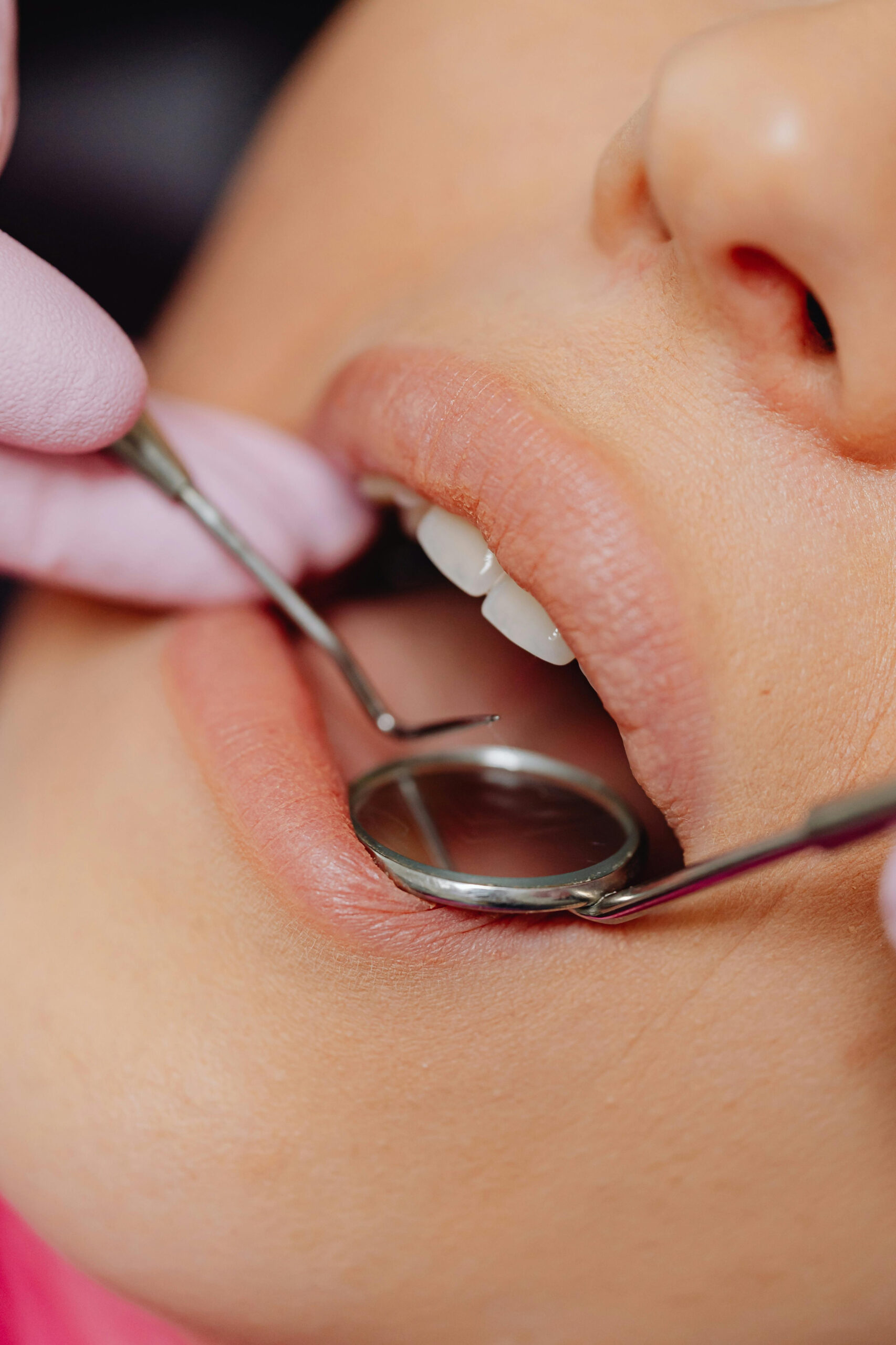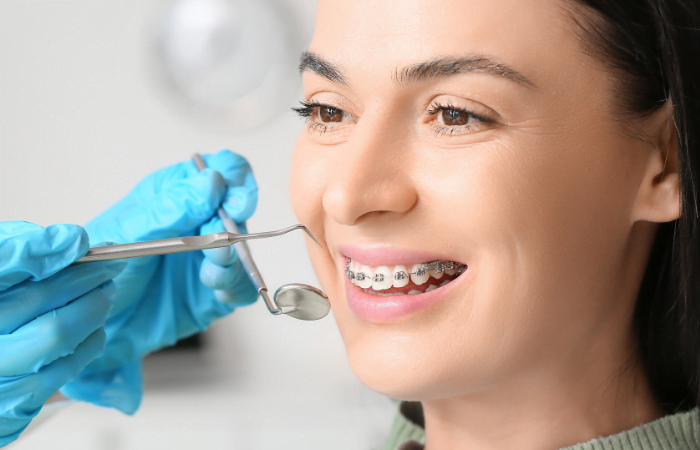Do your braces rub uncomfortably against your cheeks and gums? Orthodontic wax is the simple solution you need.
Dental wax is a vital part of wearing braces that protects you from irritation caused by metal wires and brackets. Natural waxes make up this protective barrier, and some varieties include extra ingredients for better texture and flavor, like mint. You’ll find it’s a safe and effective way to reduce pain while getting used to your new braces.
The most important feature of orthodontic wax is how it cushions your mouth’s soft tissues from your braces. The wax stays smooth in your mouth and breaks down naturally over time. The Canadian Association of Orthodontists confirms that swallowing small bits of wax while eating or talking won’t harm you at all.
This piece walks you through everything about using wax on braces. We cover application techniques and expert tips to keep you comfortable. You’ll learn helpful strategies whether you just got your braces or want better ways to manage discomfort.
What Is Orthodontic Wax and Why It Matters
Orthodontic wax becomes your trusted friend during your braces trip by creating a smooth protective barrier between metal parts and your mouth’s sensitive tissues. Let’s look at what makes this simple yet effective tool so valuable.
What is dental wax made of?
Natural waxes combine to create dental wax’s protective properties. Most orthodontic waxes blend paraffin (40-60% by weight), beeswax, and carnauba wax. These natural ingredients keep the material soft yet stable in your mouth. Some types include vitamin E, aloe vera, or pleasant flavors like mint to make it more comfortable.
The special formula keeps orthodontic wax solid at room temperature but becomes pliable when your hands warm it. This smart design helps you shape and apply it exactly where needed on your braces. The manufacturers blend these components carefully to create wax that works best at temperatures just above mouth temperature.
How it protects your mouth from braces
Orthodontic wax creates an effective cushion when braces rub against your cheeks, lips, or gums. The wax sticks to sharp or protruding braces parts and forms a smooth surface that stops further irritation. This protection helps you the most during the original adjustment period while your mouth gets used to the new hardware.
The wax sticks firmly to brackets and wires and creates a physical barrier that lets irritated areas heal. It covers rough edges that might cause discomfort or small sores on your mouth’s sensitive tissues.
Is it safe to swallow wax accidentally?
You can safely swallow small amounts of orthodontic wax by accident. The non-toxic, natural ingredients mean minor ingestion poses no health risks. The Canadian Association of Orthodontists confirms that patients often swallow small bits of wax that fall off while speaking or eating.
The wax remains safe, but you shouldn’t eat it on purpose. Remove it before meals. This step helps you avoid swallowing it and makes cleaning your teeth easier afterward.
How to Use Orthodontic Wax for Braces
Learning to apply orthodontic wax the right way will make your braces substantially more comfortable. This simple skill will help you handle any irritation that comes up.
Step-by-step guide to applying wax
You need a careful approach to apply wax to your braces:
- Wash your hands with soap and water for at least 20 seconds to keep bacteria away.
- Clean your teeth with brushing and flossing to get rid of food particles.
- Dry the area you’ll put the wax on with a tissue or cotton swab.
- Take a small piece of wax (about the size of a pea or popcorn kernel).
- Roll the wax between your fingers for about 5 seconds until it gets soft and pliable.
- Apply directly to the problem bracket or wire and press gently to create a smooth cover.
How to remove wax safely
Taking off orthodontic wax needs some care but it’s pretty simple:
- Just peel the wax off gently with your fingers.
- You can use dental floss, a toothpick, or an interdental brush if the wax is stuck.
- Brush your teeth after to get rid of any wax bits.
- Give your mouth a good rinse with water to finish up.
How often to replace wax
Regular replacement gives you the best protection:
- Switch out your wax twice each day.
- Put on new wax right away if it falls off or gets dirty.
- Don’t keep the same piece longer than two days – bacteria can build up.
- Put fresh wax on after meals and brushing.
Can you eat with wax on braces?
Your orthodontic wax won’t hurt you if you accidentally swallow it, but eating with wax isn’t a good idea because:
- Food can get stuck in the wax and bacteria will grow.
- The wax might come off and you could swallow it with your food.
- Drinking water usually makes the wax loose and fall off.
- Used wax after eating isn’t safe – it collects bacteria and plaque.
Take the wax off before you eat and put fresh wax on after cleaning your teeth.
Types of Dental Wax and When to Use Them
The right orthodontic wax can make a huge difference in your comfort level with braces. Each type of dental wax has its own advantages that work better for different situations.
Unscented vs. flavored wax
Basic orthodontic wax comes without scent or flavor, which works best for people with sensitivities or allergies. Flavored versions like mint, cherry, and bubblegum make braces more enjoyable, especially for kids. These tasty options give you the same protection as regular wax and help make your orthodontic treatment more pleasant.
Silicone-based vs. traditional wax
Silicone-based orthodontic wax stays on much longer than regular paraffin wax. The silicone wax doesn’t break apart on brackets and resists changes from your mouth’s chemistry. Regular waxes made from beeswax, carnauba, or paraffin become soft at body temperature. Silicone options hold their place better, which makes them perfect for active people.
Choosing the right wax for your needs
Your lifestyle and comfort needs should guide your choice. Natural waxes give you the most cushioning if your new braces cause irritation. Thicker, longer-lasting options work better if you eat lots of crunchy or chewy foods. Product reviews from other people who wear similar orthodontic appliances are a great way to get insights about which type might suit you best.
Expert Tips for Comfort and Oral Care
Managing discomfort with braces becomes easier if you know the right way to use orthodontic wax. These expert tips will make a big difference in your experience with braces.
When to use wax for new braces
Your mouth needs time to adjust to new braces, and the original few days often cause the most irritation. You should apply wax right after getting your braces installed and after adjustment appointments because discomfort peaks during these times. Put wax on before you go to bed to avoid overnight irritation and sore gums. Musicians need to apply wax before they play wind instruments since extra mouth movement can create more friction against the brackets.
How to prevent mouth sores
Mix one teaspoon of salt in eight ounces of warm water to make a natural antiseptic rinse that soothes swollen gums, reduces inflammation, and helps healing. Your mouth becomes more likely to develop sores if it’s dry, so drink plenty of water throughout the day. This proper hydration helps your body produce enough saliva that contains natural antibacterial components. Your oral hygiene needs to be excellent – brush after every meal and floss daily to stop bacteria from growing.
Cleaning your braces before applying wax
Your teeth need to be brushed and rinsed really well before you put on orthodontic wax. A clean surface lets the wax stick properly. Any food particles that get trapped under wax can cause plaque buildup and raise your cavity risk. The wax sticks better and lasts longer on clean braces.
What to do if wax doesn’t help
Orthodontic silicone covers might work better for you – they’re more flexible than wax and stay in place longer. Over-the-counter oral gels with benzocaine can give you quick pain relief. Saltwater rinses every few hours help existing sores heal faster. You should call your orthodontist if the discomfort lasts more than a few days because your braces might need professional adjustment.
Conclusion
Orthodontic wax will be your best friend throughout your braces. This simple tool creates a barrier between metal parts and your mouth’s sensitive tissues. It substantially reduces discomfort and stops painful sores from forming. On top of that, you can choose from many options – from basic paraffin-based to silicone alternatives, plain or flavored – to find what works best for you.
The right application technique makes a huge difference. Clean your hands, dry the brackets, and use pea-sized amounts of wax. Press it firmly on spots that bother you for the best relief. Something as simple as replacing your wax twice daily will keep your mouth healthy during treatment.
Orthodontic wax is just one piece of your braces care routine. You’ll get the best results when you combine wax with good oral hygiene, salt water rinses, and plenty of water. Of course, your orthodontist should be your go-to person if irritation continues even after trying these steps.
Your time with braces doesn’t have to hurt. Quality orthodontic wax and proper application techniques will help you focus on what matters – watching your smile transform. The temporary hassle of braces guides you toward lasting confidence with your perfectly lined up teeth.
FAQs
Q1. How does orthodontic wax protect my mouth from braces?
Orthodontic wax creates a smooth barrier between your braces and the soft tissues in your mouth. It covers sharp edges of brackets and wires, reducing irritation and preventing sores on your cheeks, lips, and gums.
Q2. Is it safe if I accidentally swallow orthodontic wax?
Yes, it’s generally safe if you accidentally swallow small amounts of orthodontic wax. The wax is made from non-toxic, natural ingredients and poses no significant health risk if ingested in small quantities.
Q3. How often should I replace the wax on my braces?
You should replace orthodontic wax at least twice daily. It’s important to apply fresh wax after meals and tooth brushing, and immediately if it falls off or becomes dirty. Never use the same piece for more than two days.
Q4. Can I eat with orthodontic wax on my braces?
It’s not recommended to eat with orthodontic wax on your braces. Food particles can get trapped in the wax, creating a breeding ground for bacteria. Additionally, the wax may dislodge and be swallowed while eating. It’s best to remove the wax before meals and reapply fresh wax after cleaning your teeth.
Q5. What should I do if orthodontic wax doesn’t help with discomfort?
If orthodontic wax doesn’t provide relief, you can try alternatives like orthodontic silicone covers or over-the-counter oral gels containing benzocaine. Saltwater rinses can also help soothe irritation. If discomfort persists for more than a few days, contact your orthodontist as you may need a professional adjustment.
Show facts






